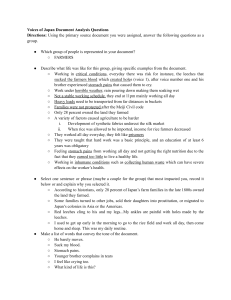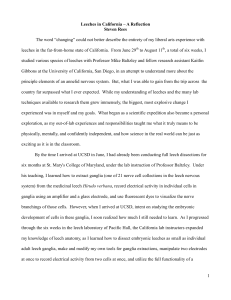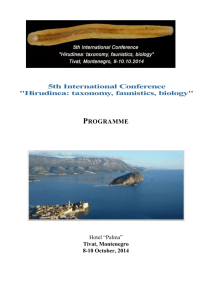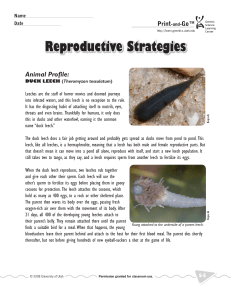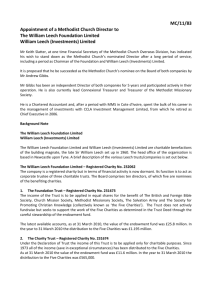The History of Medical Technology
advertisement
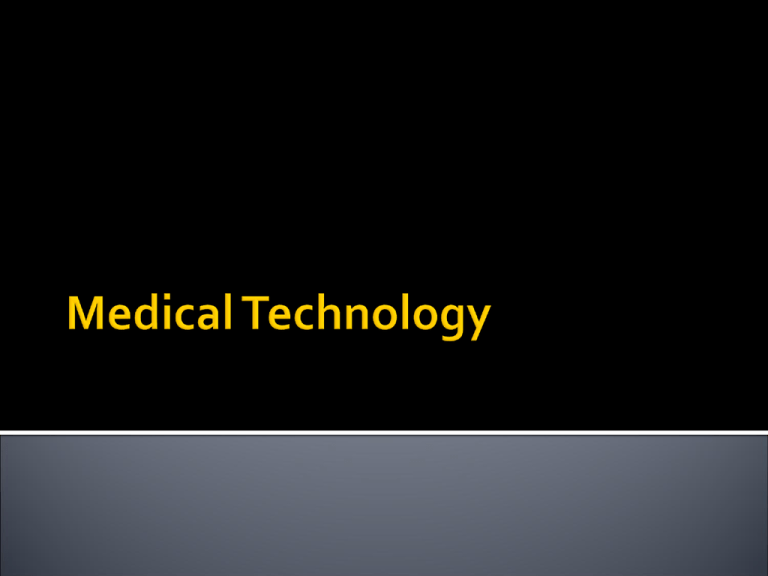
Medical Technology has changed over the years. As we gain more knowledge, ways of treating disease and injuries improves. To give you an idea, here are some ways problems were dealt with in the past. Trephine (1800s) This trephine was a hand-powered drill with a cylindrical blade that was used to bore into the skull. The spike in the center was used to start the procedure and to hold the blade in place while cutting. Tonsil Guillotine (1860s) This method of removing tonsils worked much like a traditional guillotine, slicing off the infected tonsils. This "double guillotine" design meant that both tonsils could be removed at the same time. Tonsil guillotines were replaced by forceps and scalpels in the early 20th century due to the high rate of hemorrhaging and the imprecise nature of the device, which often left tonsil remnants in the mouth Amputation Knife (1700s) Knives used for amputations during the 18th century were typically curved, because surgeons tended to make a circular cut through the skin and muscle before the bone was cut with a saw. By the 1800s, straight knives became more popular because they made it easier to leave a flap of skin that could be used to cover the exposed stump. Artificial Leech (1800s) Bloodletting with leeches was such a popular treatment for a range of medical conditions that an artificial leech was invented in 1840 and was used frequently in eye and ear surgery. The rotating blades would cut a wound in the patient's skin, while the cylinder would be used to produce a vacuum that sucked up the blood. Dr. Beaumont is able to study digestion in a living human stomach when a trapper on Mackinaw Island blows a hole into his stomach and lives. Dr. Beaumont would put pieces of food into the stomach and then remove them to see what happened. Chinese people had been using plants for medicinal purposes for 4500 years and some of these had been brought to Europe. Many domestic plants, such as foxglove and marshmellow, were also used to cure illnesses. As well as these, doctors believed in the power of powders said to be made from strange ingredients such as horn from the mythical unicorn, and bezoar stone (recently made famous in J.K.Rowling's Harry Potter books), which was claimed to be the tears of a stag turned to stone. Live worms, fox lungs (for asthma), spiders' webs, swallows' nests and the skulls of executed criminals were also highly sought after ingredients. Why did doctors use leeches? Leeches are a type of slug-like worm, used for thousands of years to reduce blood pressure and cleanse the blood. A leech placed on the skin will consume four times its own weight in blood, and with the blood the toxins that produce diseases. While the leech is sucking it releases a chemical called hirudin, which prevents coagulation, or clotting of the blood. Fevers were thought to be the result of too much blood in the body: doctors deliberately cut veins or used leeches to release this 'bad' blood.

